Review and photos by Nathan Morris (AKA ‘Takama’), edited by Plesiosauria.
Megacerops was a large odd-toed ungulate that lived during the Late Eocene in North America. It is most commonly referred to by the synonymous name Brontotherium. Brontotherium means ‘thunder beast’, and its origins come from an old American legend that suggest that these beasts ran across the clouds, while causing thunder to roar with their footsteps. The legend was started by the fact that after rainstorms, the skeletons of these creatures would be washed out of the earth allowing the Native American tribes to examine them and come up with primitive theories on what these creatures are.
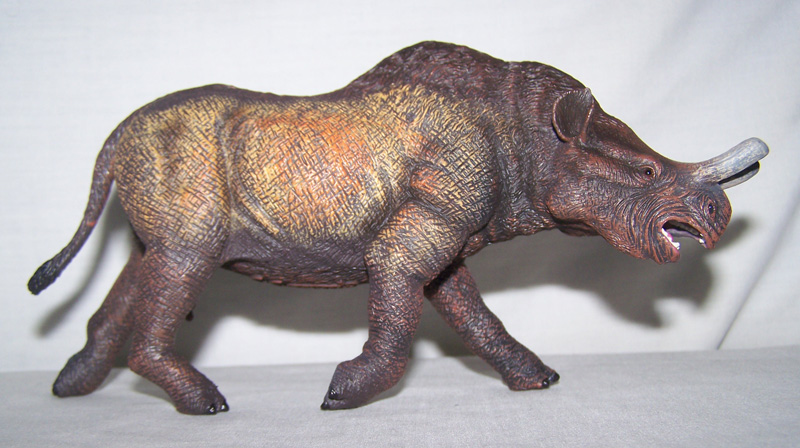
As with a lot of prehistoric mammals, there are not that many brontotheres on the prehistoric figure market. Starlux and Kaiyodo are the only ones that come to my mind but they are now retired. Thankfully, the brontothere’s are starting to become more popular in today’s society. They appeared in the film Ice Age (where it was mistakenly referred to as a rhino), Walking with Beasts, and in a low budget hunting video game called Carnivores Ice Age.
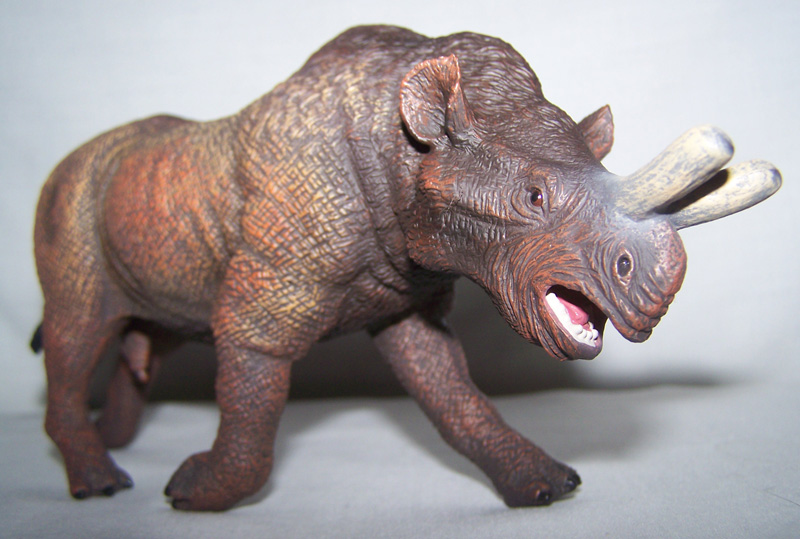
CollectA is best known for producing obscure species, but they don’t have as many mammals as one might expect. Up until now, all that CollectA had in terms of prehistoric mammals was a Mammoth, Smilodon and Paracerathrium. That changed in 2012, and CollectA seems to be eager to release more mammals, with a Deinotherium on the cards for 2013.
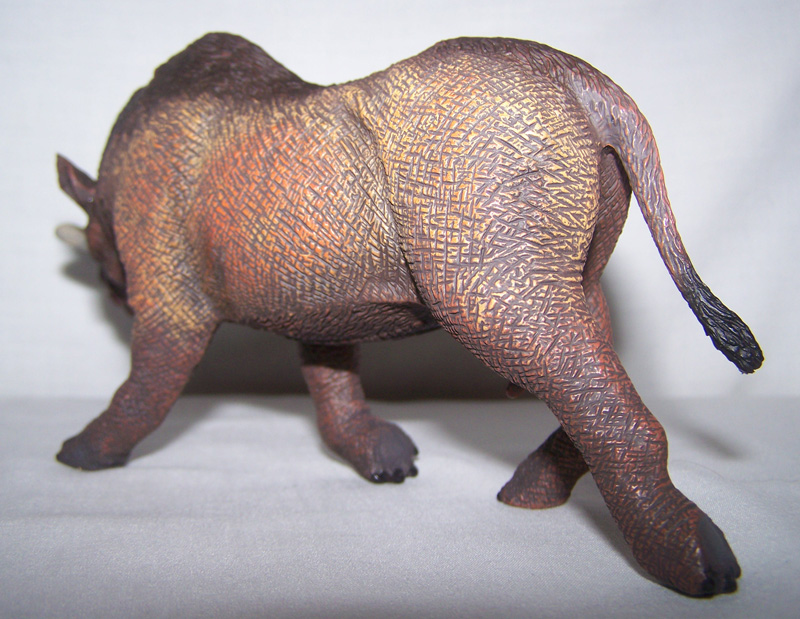
First impressions with this figure – it is simply stunning! CollectA has clearly done its homework while sculpting this model, and as a result, it matches perfectly with some more professional reconstructions on the Resin Figure market. The creature is best distinguished by tall neural spines and a large Y-shaped horn on its face. Despite its appearance, Megacerops was not related to rhinos, in fact it’s a distant relative of modern horses. The horn was at one time thought to be used for combat against rivals during the mating season, but further studies have shown that the horn was delicate, so it is highly unlikely it was used as a weapon against others of its kind.
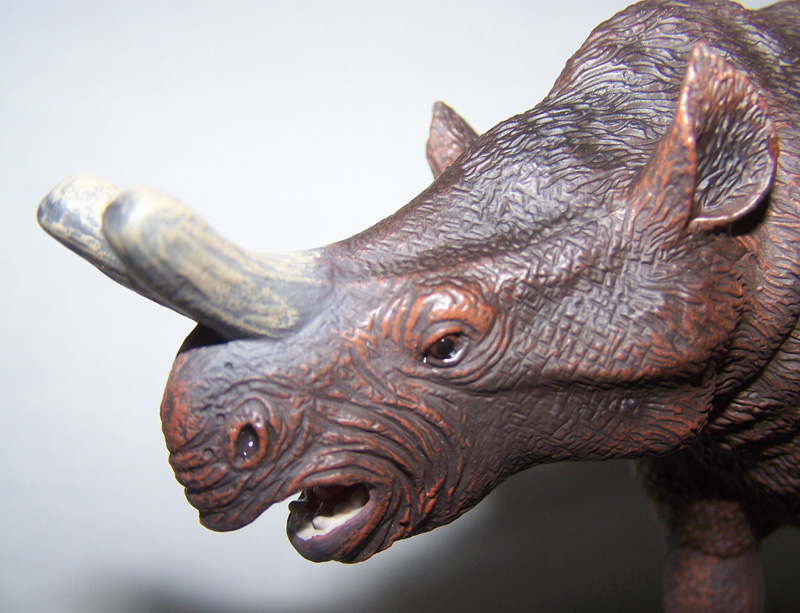
It is believed that the size of the Y-shaped horns differed depending on the sex of a certain individual. (Supposedly the larger horns represent a male, but I could be wrong.) Well it’s obviously hard to tell this model’s sex by looking at the horn, but if you’re really curious about its gender, all you have to do is take a look at its back side and see. Yes, CollectA has clearly made this model a male, which is not uncommon with figures of modern animals, but a lot of those figures have there genitals tucked away out of sight. As you can clearly see, that doesn’t apply to CollectA’s Megacerops. As we all know, this is not the first time the company has done something “mature” for their products. I’m sure that a lot of you remember that hadrosaurian comic prop from back in 2010, but while the head on that figure was an unintentional mistake, the exposed anatomy on this Megacerops is clearly sculpted on purpose.
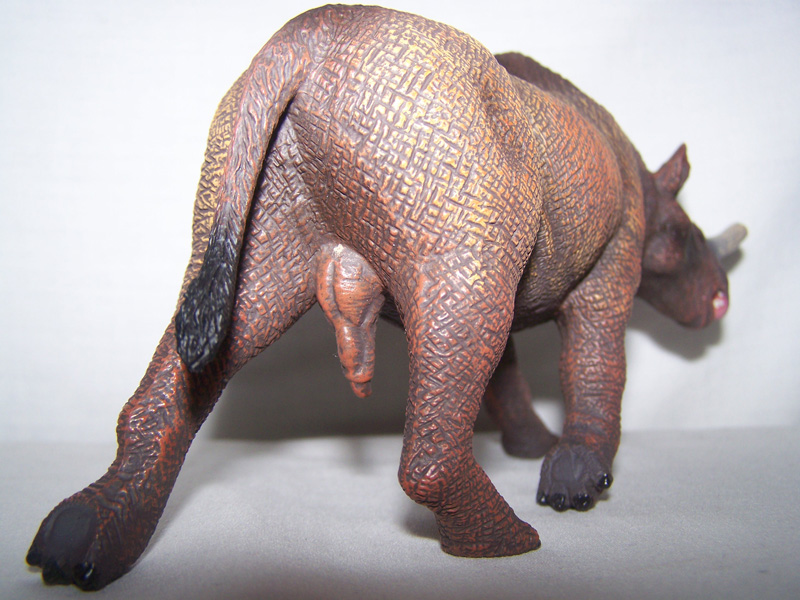
Now that that’s taken care of, its time to nit pick this figure for a couple of flaws. The first is that the head is too big in proportion to the body, another is that its feet lack the signature hooves of an odd toed ungulate.
The colors on this figure are natural and believable. Its base color is a rusty brown, and the body is highlighted with a yellow wash over (this kind of reminds me of the yellow on Asian elephants). On the flanks, it is colored orange on the rib cage, and on the head, the horns are as white as a bone, but are painted with a weaker type of paint, and is prone some serious rubbing. The plastic base colour is black, which shows through if the paint just so happens to rub off, so keep it safe, in case you’re tempted to get one for you collection.
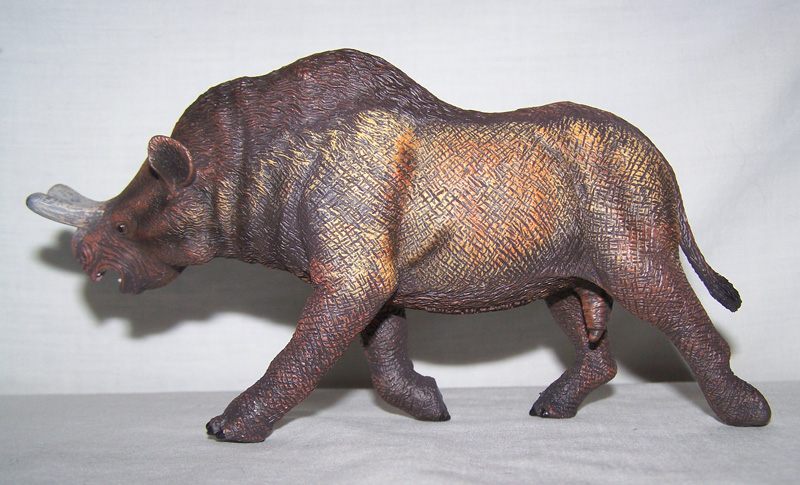
Special thanks to Dan’s Dinosaurs for supplying me with a specimen for review (and for sending me a replacement due to the discovery of faulty paint on the horns).
Disclaimer: links to Ebay and Amazon on the DinoToyBlog are affiliate links, so we make a small commission if you use them. Thanks for supporting us!




[…] as the other prehistoric mammals in the line, but since they came out the same year as the well hung Megacerops, I don’t think we can expect a resculpt of this couple any time soon. Back in 2012, Anthony […]
[…] in 2012 with the award-winning Megacerops, CollectA’s prehistoric mammals have been nothing short of spectacular and the Andrewsarchus […]
[…] were an unusual family of ungulates related to the similarly extinct brontotheres as well as extant horses, rhinos, and tapirs. At over 8 feet tall, Moropus was one of the largest […]
That crotch is giving me flashbacks to The Goonies. …Wouldn’t it be funny if that thing just snapped off?
[…] The sculpting on this toy is first rate. The fur on the body ranges from relatively thin on the face to thicker on the main body and then thickest on the mane. The legs are thin compared to the head and body, but are covered in powerful muscles. Oh, and a quick glance at the underside of the toy reveals that this is a male Daeodon. At least it’s not as glaring as the Megacerops. […]
Really, CollectA should be complemented for their ongoing production of usually very decent prehistoric mammals, a segment of the market that doesn’t seem to generate the excitement of big brother Dinosaur.I suppose the best way to do this might be to buy the models, which, in this case, as well as their new Arsinoitherium, I have done. Wonderful sculpts. I hope that 2015’s mammals (Daeodon, Smilidon, Moropus) continue this upwards trend.
[…] 2012, CollectA released a pretty nice non-conventional toy model of a Megacerops (=‘Brontotherium’). This was good news for prehistoric mammal collectors. But in 2013, Mojö surprised us with the […]
My advise toi the author of this article is to do more research regarding the horns.
Studies shown that horns was used for fighting between males in the mating season and alos to defense themselves. The delicate horns….was never an aspect of the Magcerops.
I just want to point out that i was wrong about Rhinos not being related to this creture. They are indeed related. Sorry about the mistake
They should worry more about getting right the obvios stuff like the hooves and the proportion of the head which are clearly wrong just by looking at the skeleton of the animal instead of sculpting genitals. Is a toy after all.